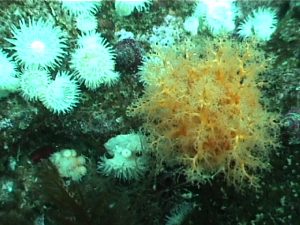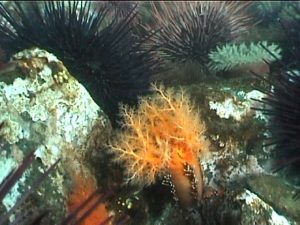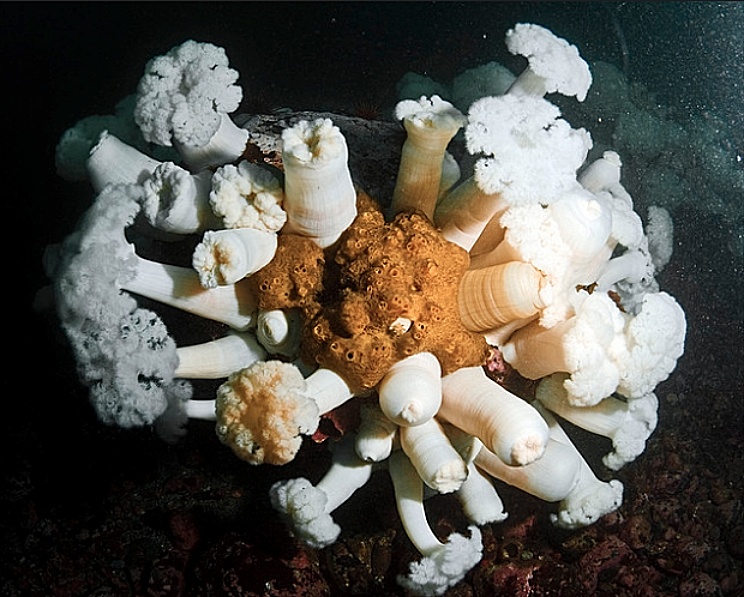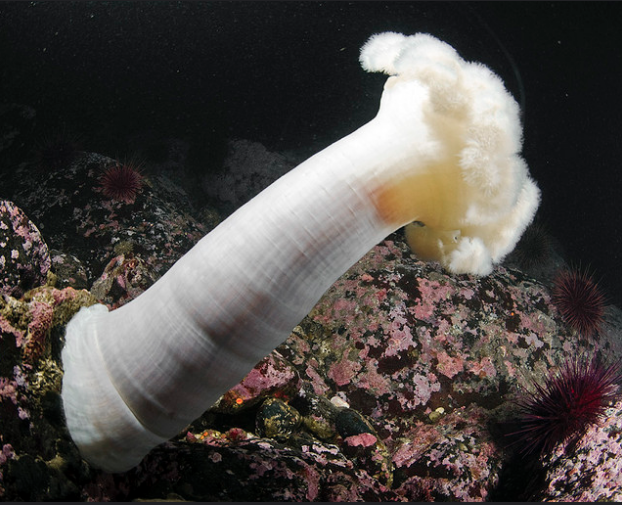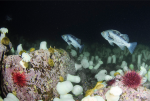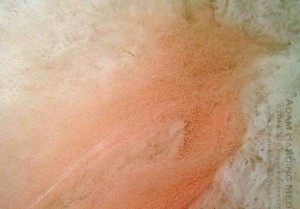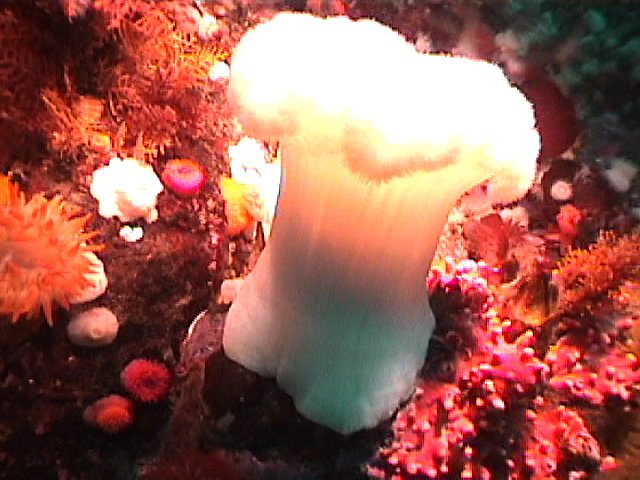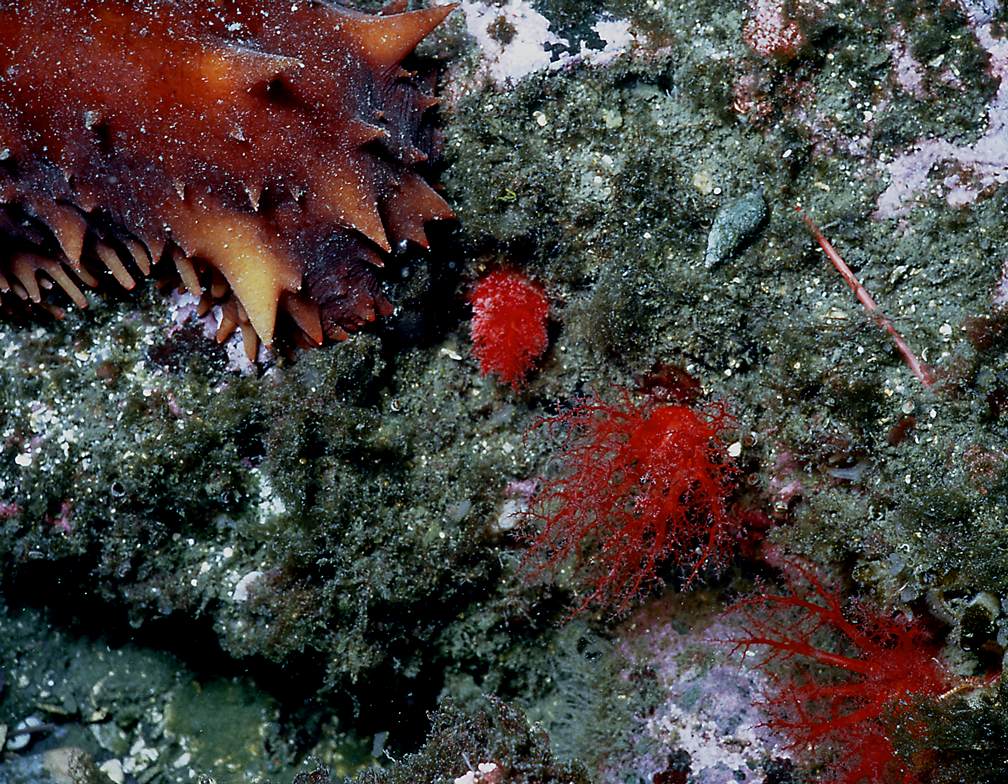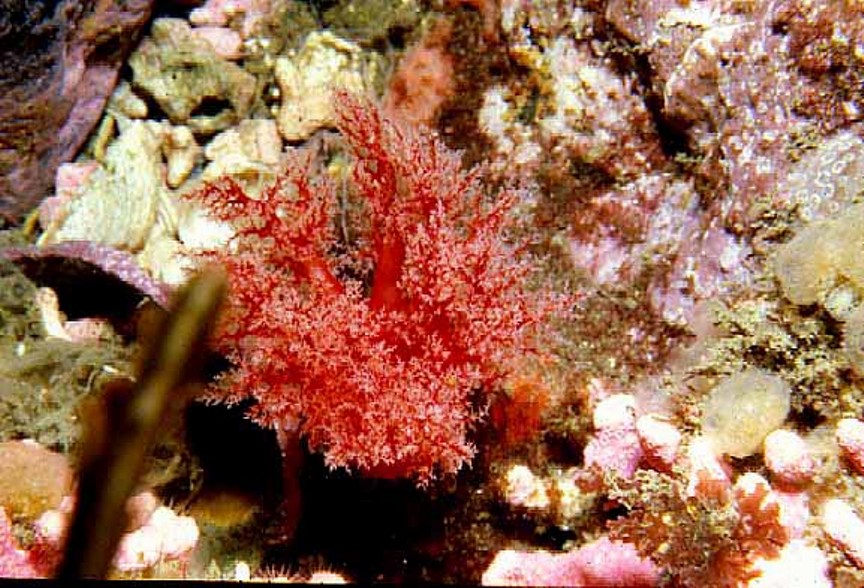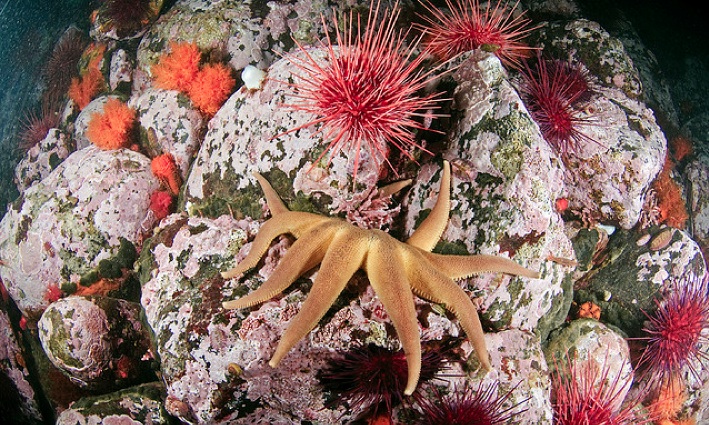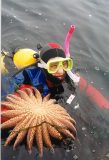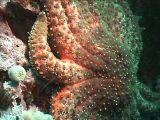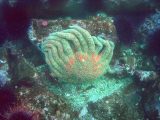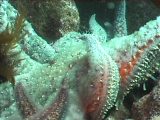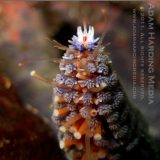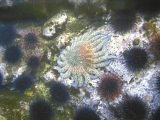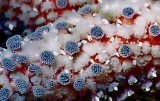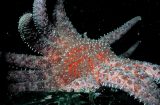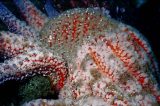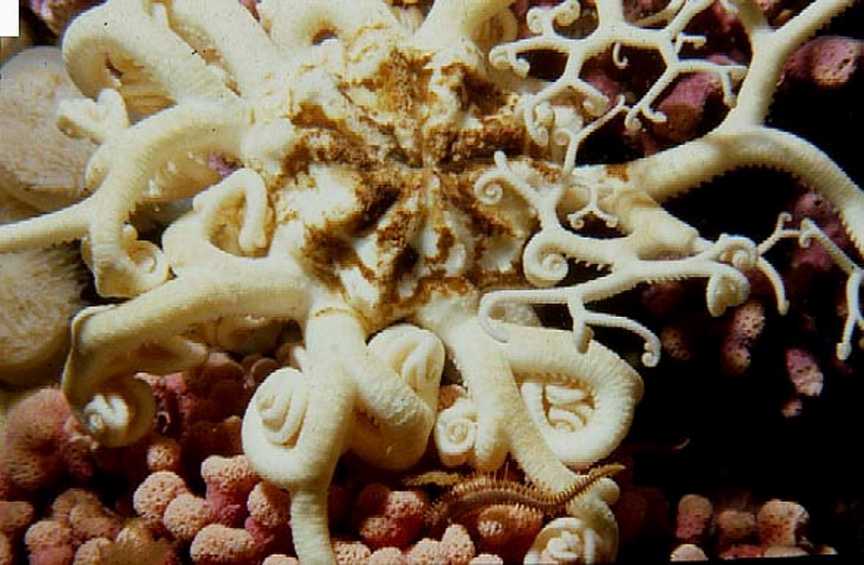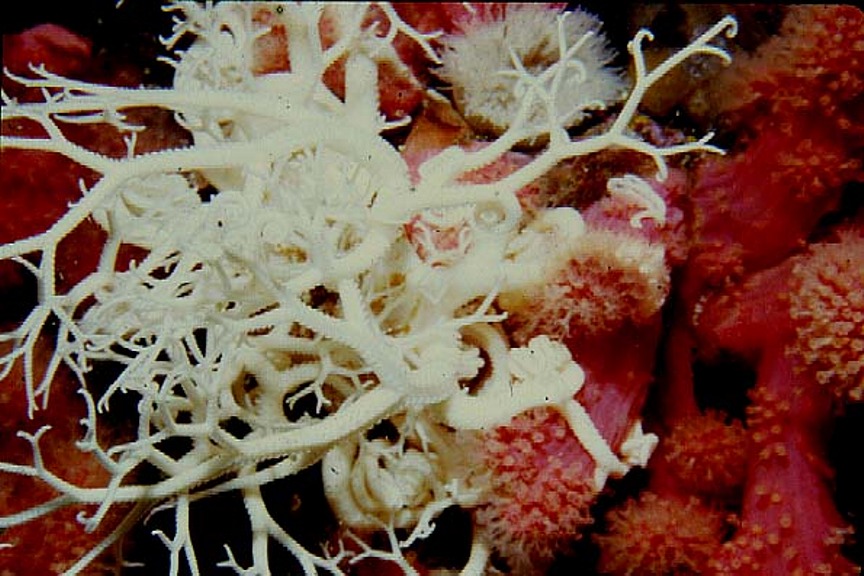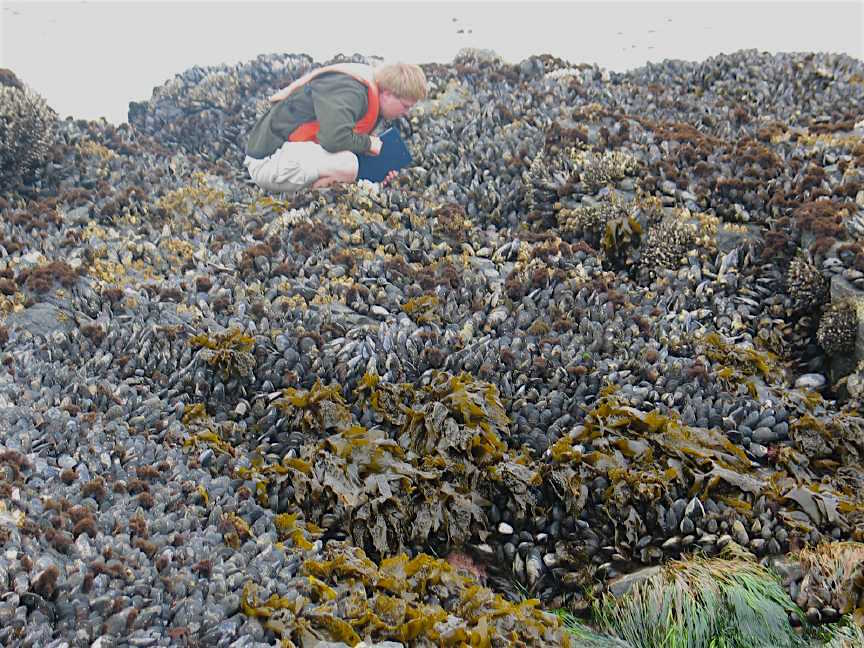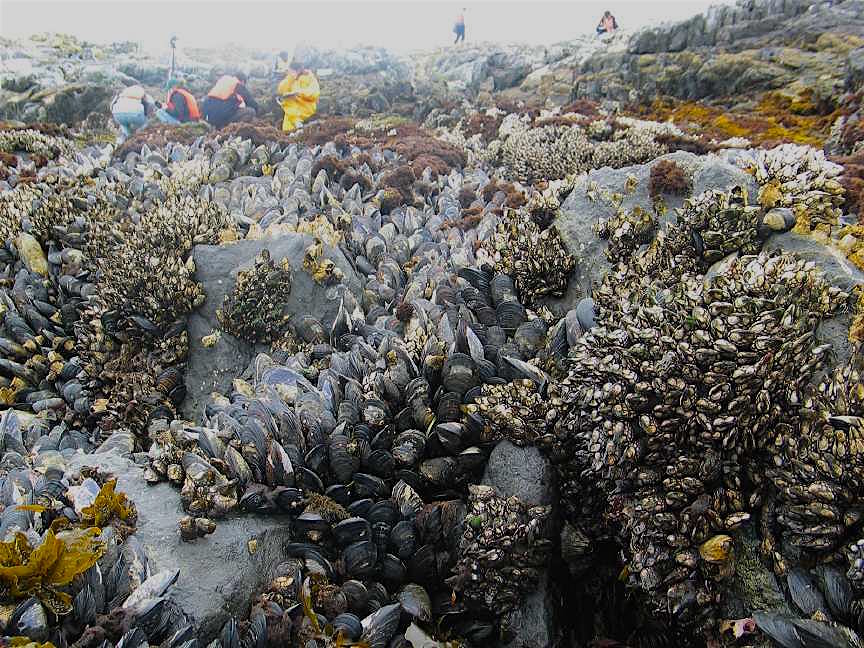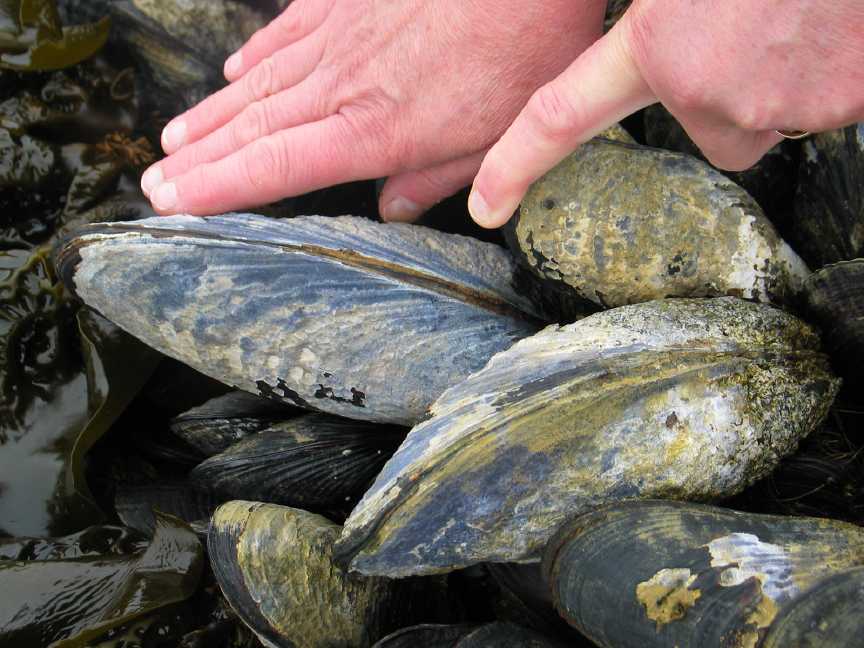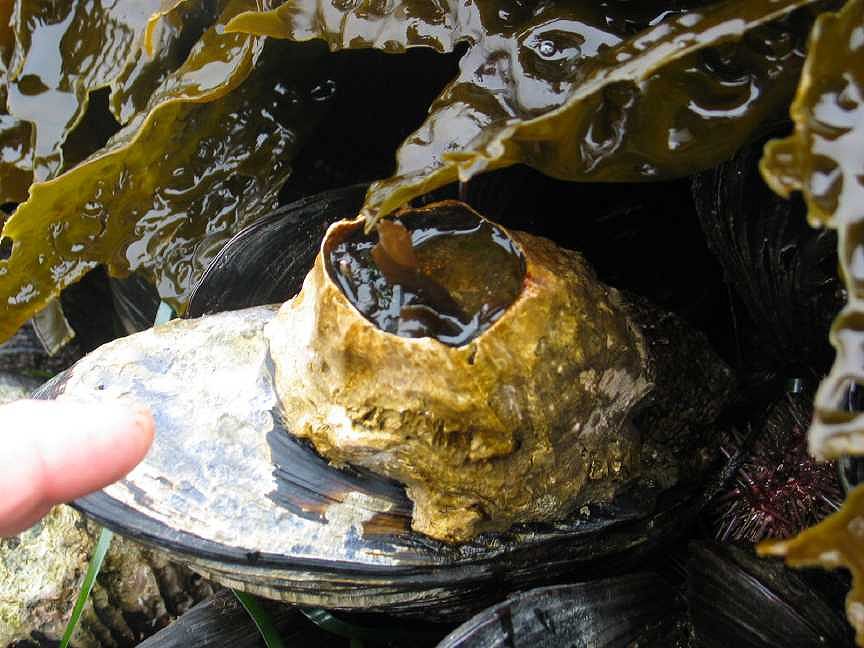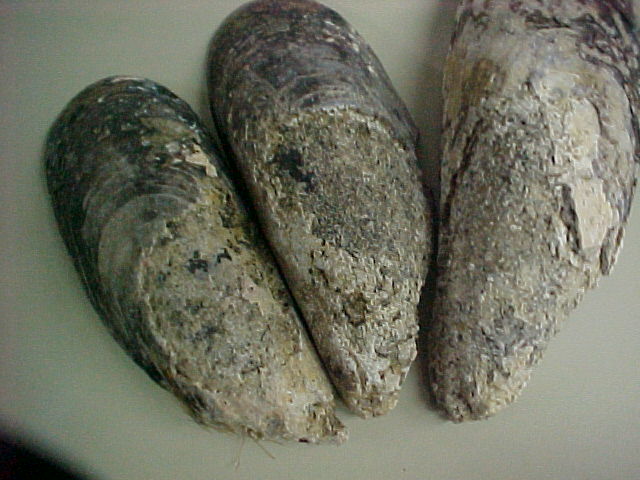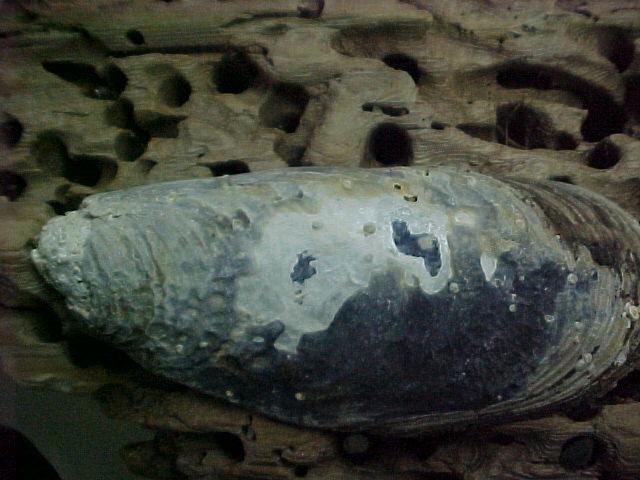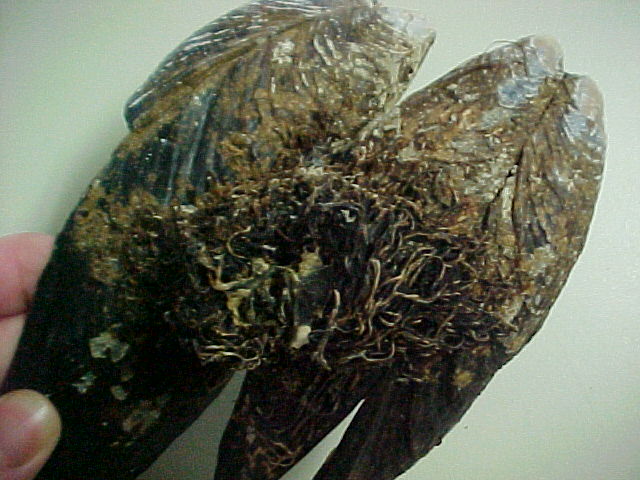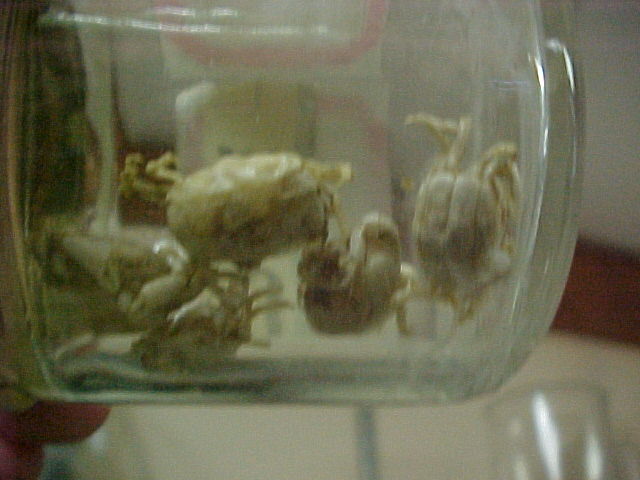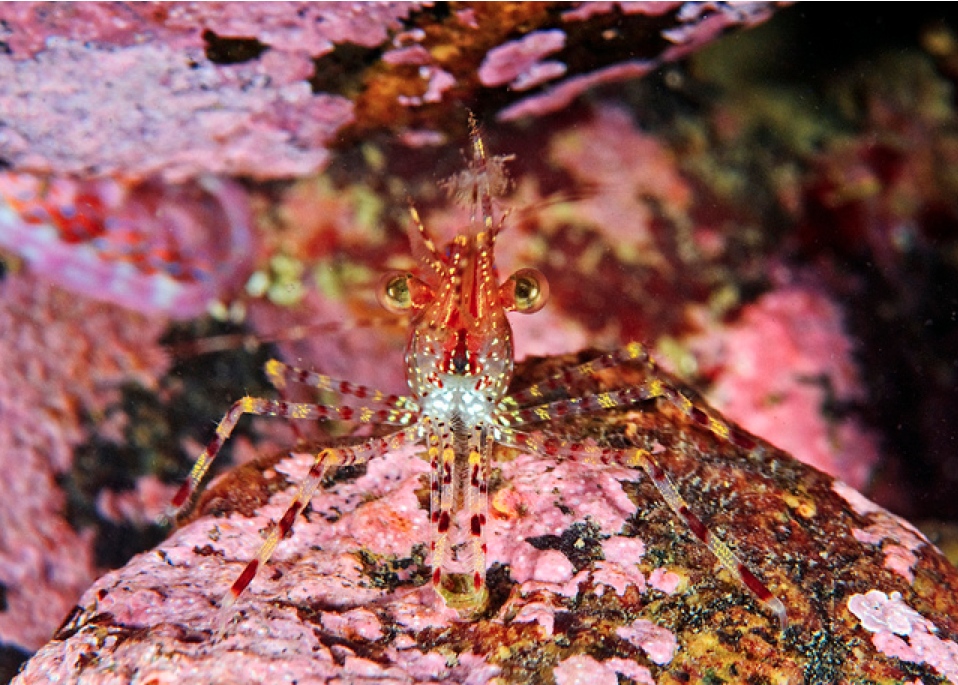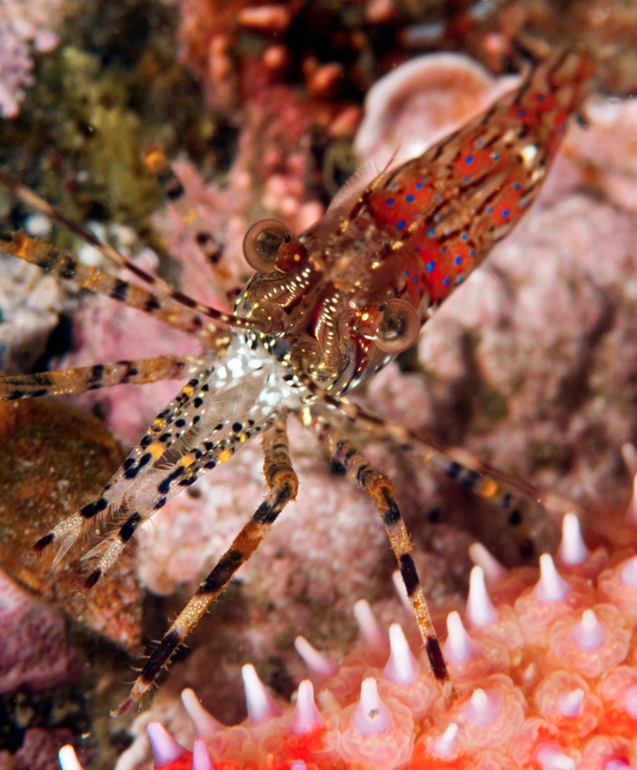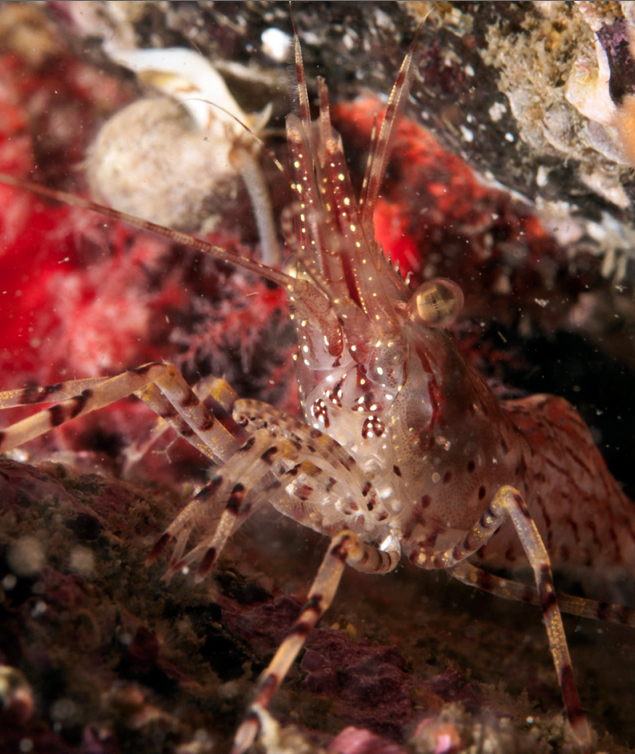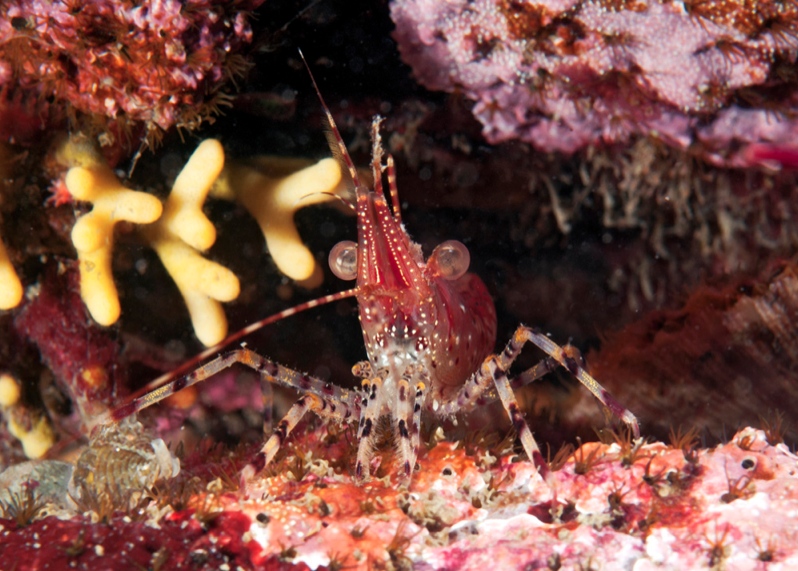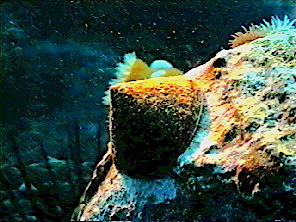The orange Cucumaria miniata sea cucumber is a common resident just off the docks at Race Rocks in 5 to 10 meters of water. In this video they occur in a high concentration relative to other areas. Each orange tuft is the tentacle mass. If disturbed, it quickly withdraws into the sea cucumber body which is always buried under loose rocks.
Note the name Cucumaria miniata should be on the following video instead of C. curata
| General Description:The Orange sea cucumber received its Latin name, Cucumaria because it resembles a cucumber. The orange pigment that separates it from other sea cucumbers comes from a chemical called cinnabar or vermilion. Although it seems to be completely soft and fragile, it actually has bone-like plates in the body wall called ossicles. To stay attached to the holes between the rocks, the cucumber uses tube feet that you can see in the image above in 5 rows around the circumference of the body. If you ever want to keep one as a pet, don’t get too attached because they usually only live about 5 years, sometimes 10 if they’re lucky.
Habitat: Sea cucumbers live in between boulders and sheltered rock formations. Because they are able to stay attached to surfaces, they prefer to live in areas with stronger currents, making it harder for predators to reach them. Feeding: The orange sea cucumber is a suspension feeder. This means that it catches food in its tentacles. After the food is caught, it removes the food with its eating arms and scrapes it into its mouth. Sea cucumbers eat plankton and detritus. Reproduction: Unfortunately, sea cucumbers aren’t very intimate creatures. In fact, their mating process can’t have any less contact. When the time comes to make a new cucumber and two cucumbers are physically (and emotionally) ready, one will release eggs into the water and the other will release sperm. From that, the two elements meet in suspension and that’s it. Predators and Defenses: The cucumbers main predators include fish, and even humans. That’s right kids, there are some people in the world that actually eat these things. To protect itself, the cucumber has many defenses. Their skin is some of the most amazing tissue found on an animal. The compound is made of a material called ‘catch collagen’ which can change from liquid to solid when neurologically triggered. It does this so can squeeze into small spaces and then harden again. Another defense is they “pee” out all the water in their system and shrink into a small, hard rock. The “peeing” usually occurs when the cucumber is removed from its habitat. If that’s not enough for you, they also can bust out a defense called evisceration. What happens here is if the cucumber is stressed and scared enough, it will spew its guts out. That means everything, intestines, gonads, respiratory organs, everything. Now after that, you would think that’s the end but if it can get itself to a safe habitat, it can actually regenerate its organs. Biotic Associations These guys are generally really passive, and they don’t really interact with any other organism or with between each other really. |
|||||||||
| References:http://oz.plymouth.edu/~lts/invertebrates/Primer/text/holothuroidea.html
http://www.afsc.noaa.gov/hodiak/photo/cuke03.html |
|||||||||
Domain Eukarya
Kingdom Animalia
Phylum Echinodermata
Class Holothuroidea
Family Cucumariidae
Genus Cucumaria
Species miniata
Common Name: Orange Sea Cucumber
| Other Members of the Phylum Arthropoda at Race Rocks |
and Image File |
 The Race Rocks taxonomy is a collaborative venture originally started with the Biology and Environmental Systems students of Lester Pearson College UWC. It now also has contributions added by Faculty, Staff, Volunteers and Observers on the remote control webcams. The Race Rocks taxonomy is a collaborative venture originally started with the Biology and Environmental Systems students of Lester Pearson College UWC. It now also has contributions added by Faculty, Staff, Volunteers and Observers on the remote control webcams.
March OctoberFebruary , 2002, Andres Jennings (PC yr 28) |

